This last summer, while picnicking (and sailing) at Lake Cleveland we met a really nice family that let my children paddle some of their Lifetime “Wave Junior” kayaks. The kids had so much fun with these boats that I realized that I had to get one. Not only would this give the opportunity for the kids to captain their own vessels, but it would bolster support for more family outings to the lake. However, these plastic kayaks, cost upwards of $100 and they only hold one child apiece. With 5 children (and one on the way) getting Wave Juniors for everyone that was interested was going to cost way more than KaeLynn lets me spend on boating.
Besides, I sort of like building boats.
I ran across the mouse boat (and Gavin Atkin) when I was trying to decide which sail boat to build. If I would have been looking for something to paddle, the mouse boat would have been at the top of the list. Well, now I was looking for something that I could paddle. The mouse boat looked easy and inexpensive to build, and stable to paddle. Add to that the fact that Shorty Routh (of Puddle Duck fame) also has a mouse boat variant (The Flats Rat), and I was sold.
The question then became, could I build a mouse boat inexpensively enough so that it fit my budget. A bit of back-of-the-envelope calculation and it seemed that I could build a nice mouse boat for less than the cost of a Wave Junior–if I didn’t value my time very highly. However, I am a Scout Master who is always looking for inexpensive and fun things for boys (and me) to do. So I didn’t really have to worry about labor costs. I am actively looking for these sorts of projects. If I could drive the price of the materials for the mouse boats down low enough there was a chance that I could build boats with both my Scouts, and with my children. It seemed doable, and so I decided to do some more exhaustive research.
With the pdracer I purchased Jim Michalak’s book after I had already started, and then learned that I had made quite a few rookie mistakes. Plus I learned that I had spent quite a bit of time and energy designing hatches for my floatation chambers only to find that he had plans for better hatches, that were much easier to build, in his book. I decided to be smarter this time so I purchased Ultrasimple Boat Building before I purchased any materials. I highly recommend the book. It is a worthy addition to any boat builder’s library, and it is chuck full of plans for interesting boats. There is no question in my mind that my mouse boat is a much better boat because of Mr. Atkin’s many insights.
In some ways, however, the book was a little discouraging. Mr. Atkin warns against using many of the materials that I had already decided I was going to use. Titebond II, for instance, is much less expensive and much less toxic than the other likely alternatives. Since I was going to be building this with my little girls, and since the goal was to make a small fleet of these boats both of these considerations were pretty important. I had also decided to use inexpensive RevolutionPly 5mm underlayment plywood, and drywall tape to tie everything together. I used both in my pdracer and it still looks fine after a year of hard use and being stored outside.
I decided to press ahead with my material choices. It will be interesting to see how long I can make a boat like this last. The fact of the matter is that I have friends that have spent nearly as much time and energy on boats made of cardboard (for Scout competitions). If the boat fails spectacularly I will be sure to blog about it. Otherwise, the fact that I am cost and toxicity sensitive made the choice for me.
This gave me a ridiculously inexpensive shopping list:
- 2 sheets of plywood (half a sheet would be left over) $13 a sheet at Lowes.
- One roll of Extra Stength Fibatape (250 ft) $11.
- One Gallon Titebond II $18.
- One Gallon white semi-gloss exterior latex paint $22.
- One 12 foot 2×6 that I ripped into 11/16 strips $8. This provided enough strips for the chine logs and spars (when laminated togeter) for my pdracer, plus gunnels for the mouse boats.
It should be noted that this is enough paint and glue for at least two mouse boats, and 3 sheets of plywood would also serve for two mouse boats as well. So adding that up that’s under $110 for two mouse boats. That I can swing.
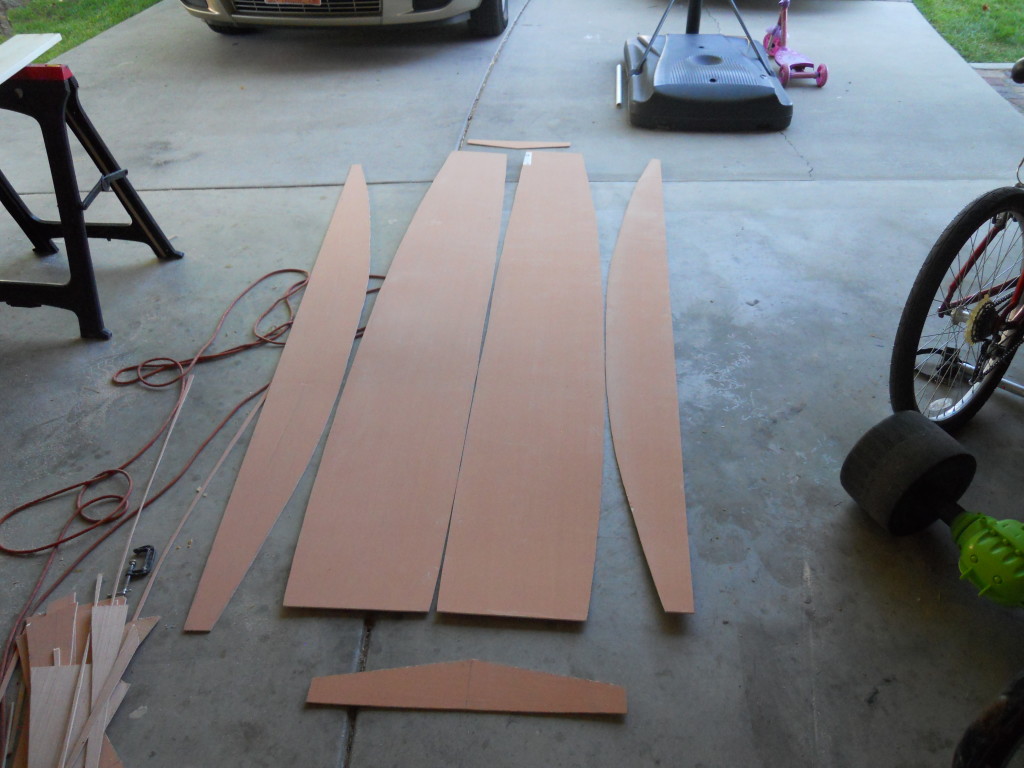
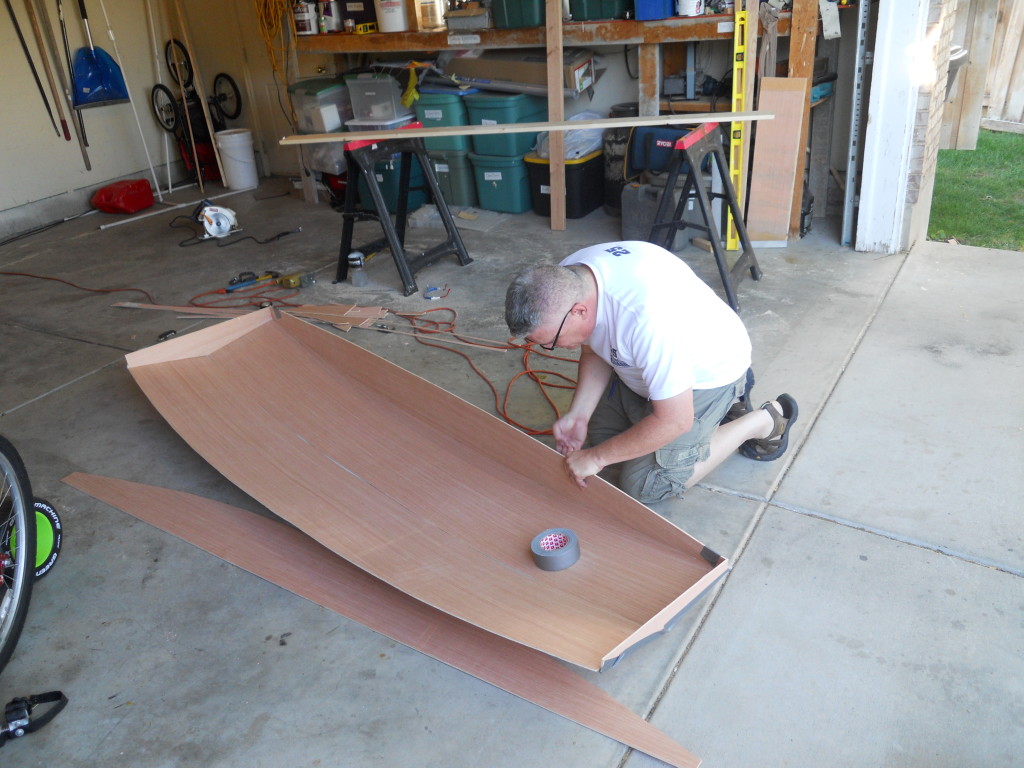
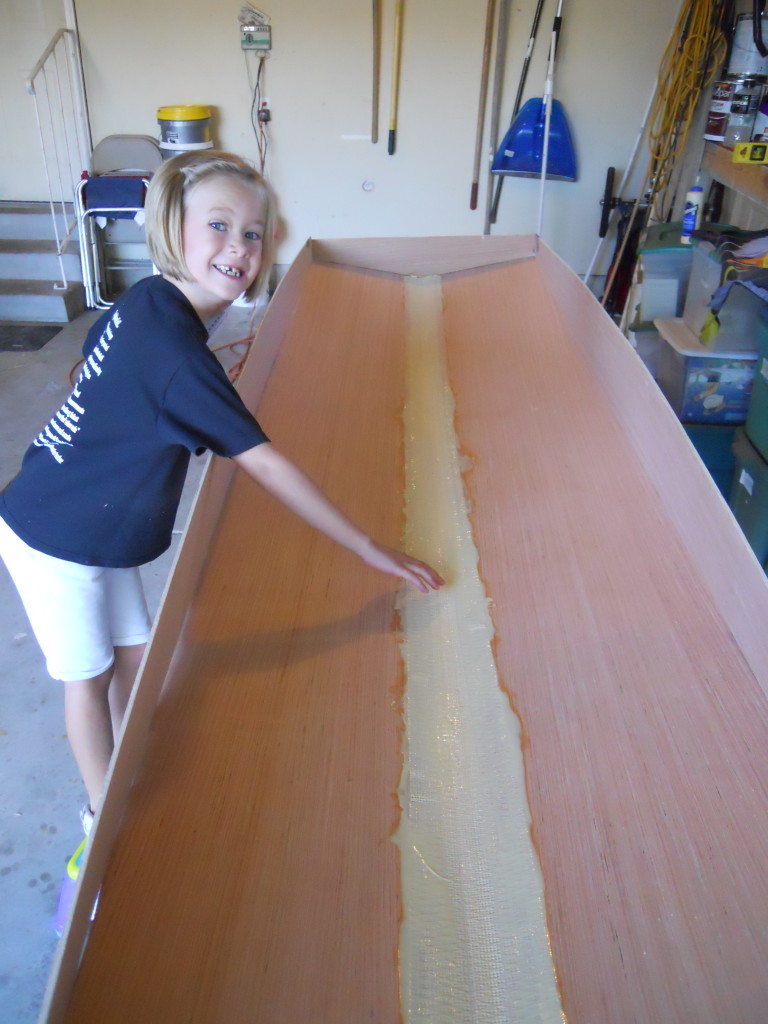
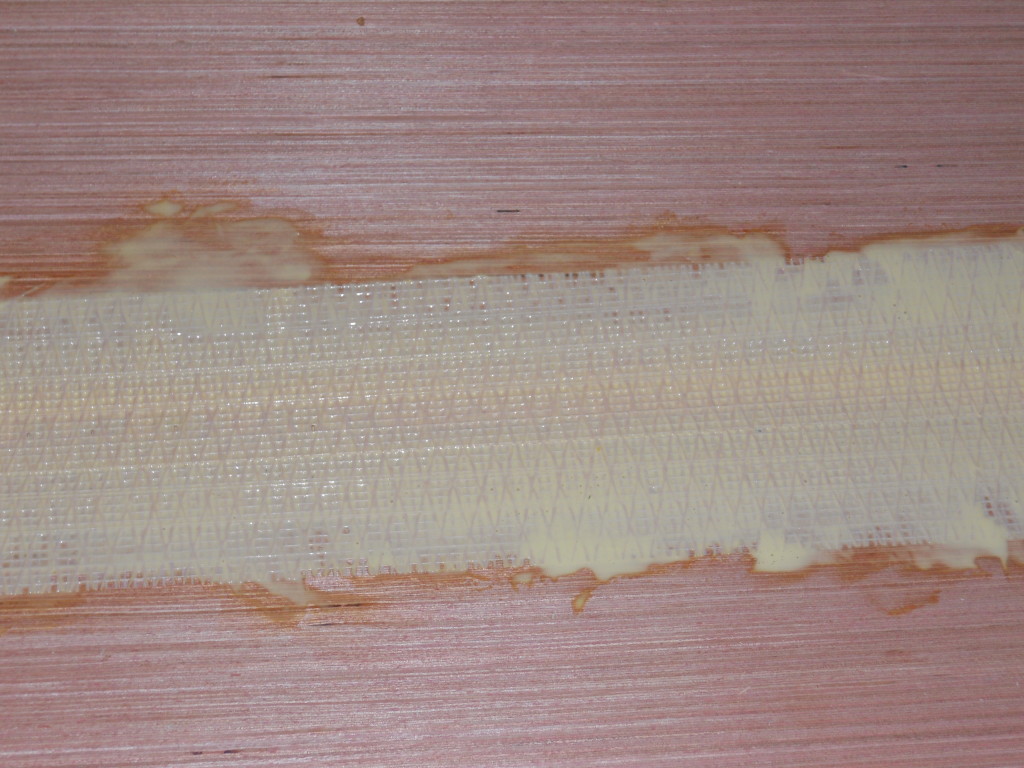
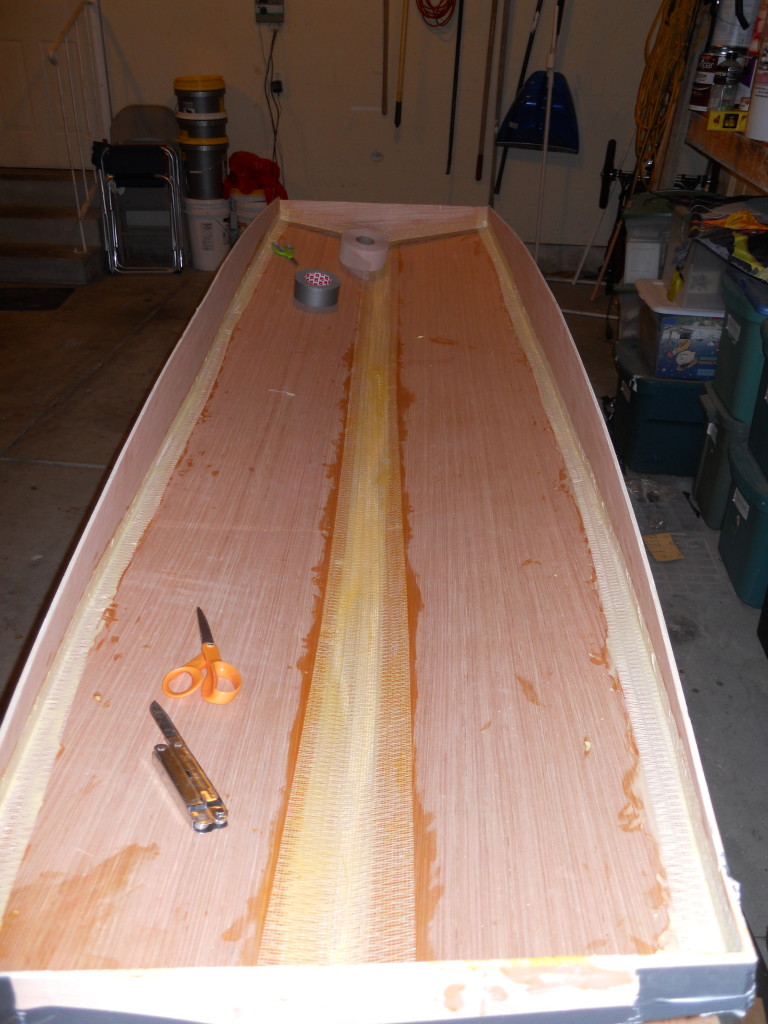
It was exciting to go from a pile of wood to a 3D boat in a few hours. Especially considering the fact that this boat wouldn’t have any of the fiddly bits that take so much of the overall time when you are building a sailboat. With the mouse boat once the hull is done, that’s all there is too it.
Well, not quite. I also had to make a paddle, but that’s definitely going to be another post. This post is out of control.
By Wednesday September 8, I had taped in the bulkheads and taped up the outside seams. Mr. Atkin’s book suggests that we put the bulkheads in first, but this technique worked very well.
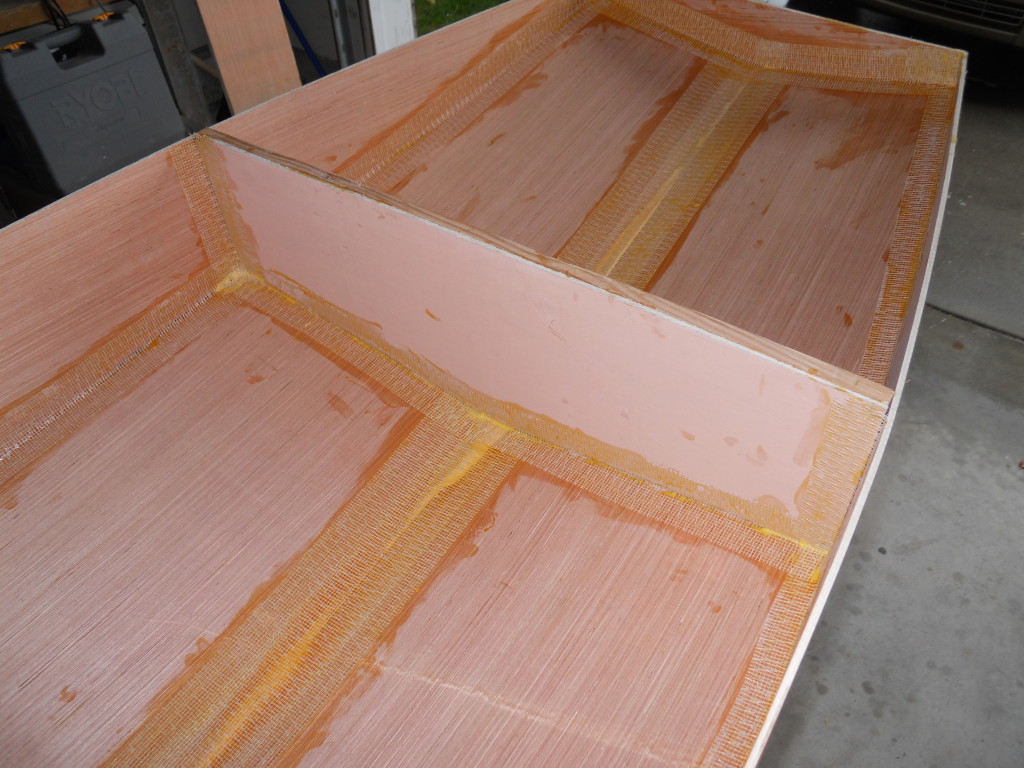
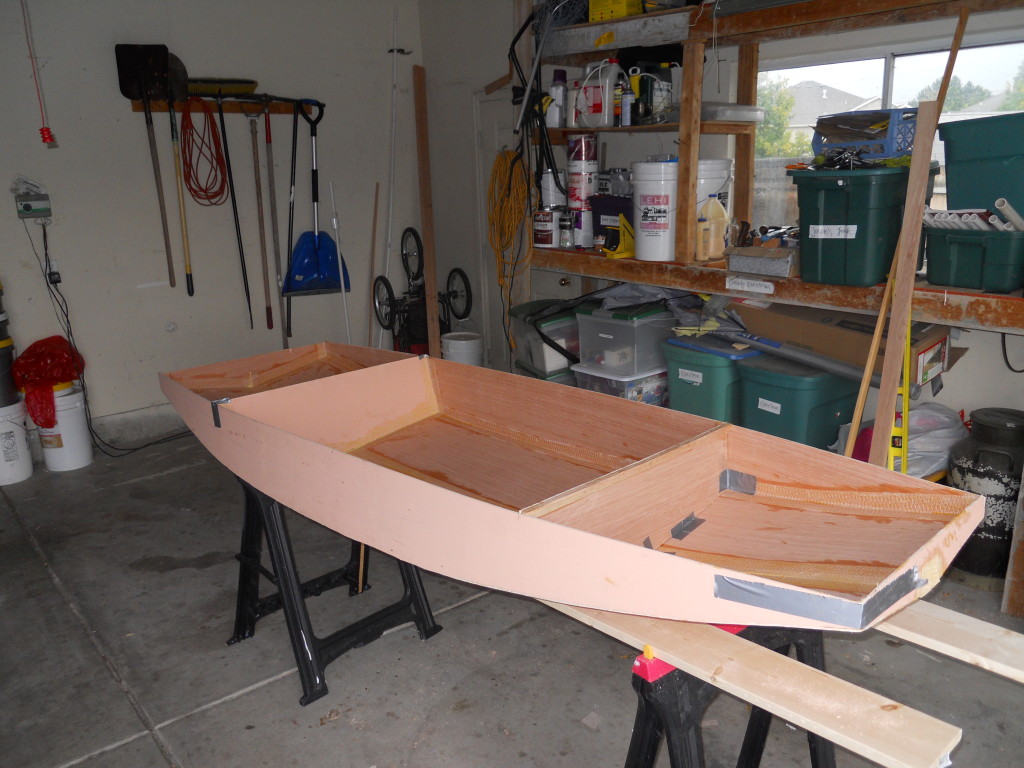
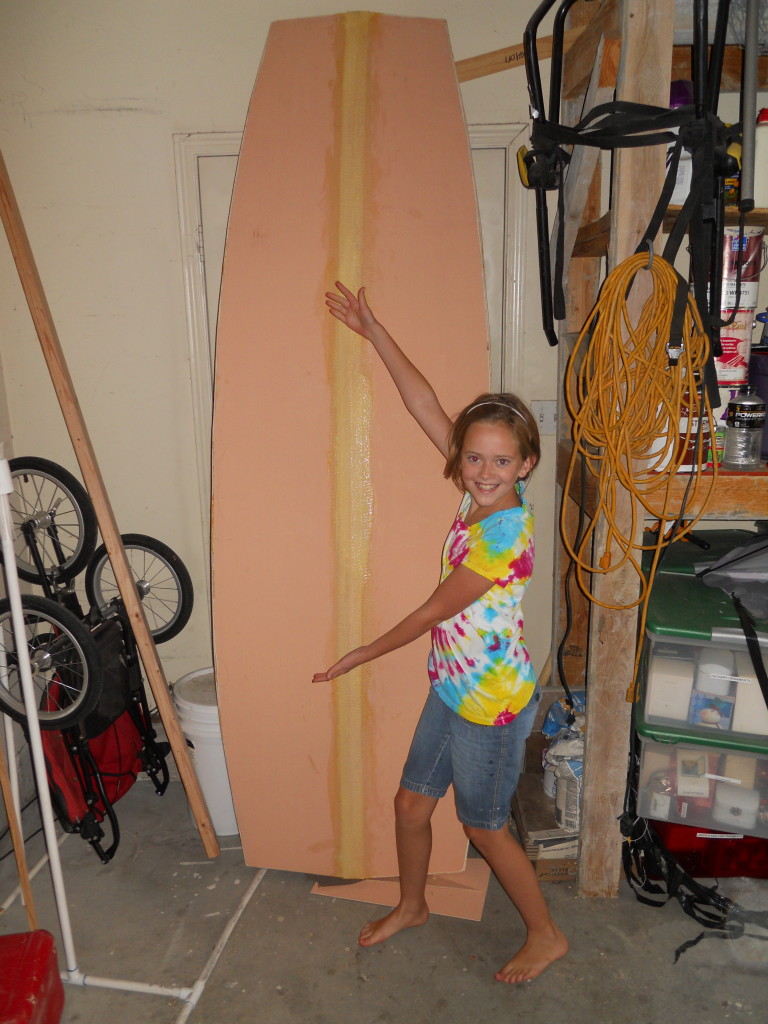
I then took a most of a week off from the boat to build a rabbit hutch. That was a bit discouraging, because I knew I was running out of good weather. However, Eliza has been asking for a rabbit since before she could talk (really), and we came across a great deal on a Norwegian dwarf. We bought the rabbit before we had an appropriate place to put it, and when I went to price out pre-made rabbit hutches I was shocked.
Still by September 13, I had gunnels on the boat.
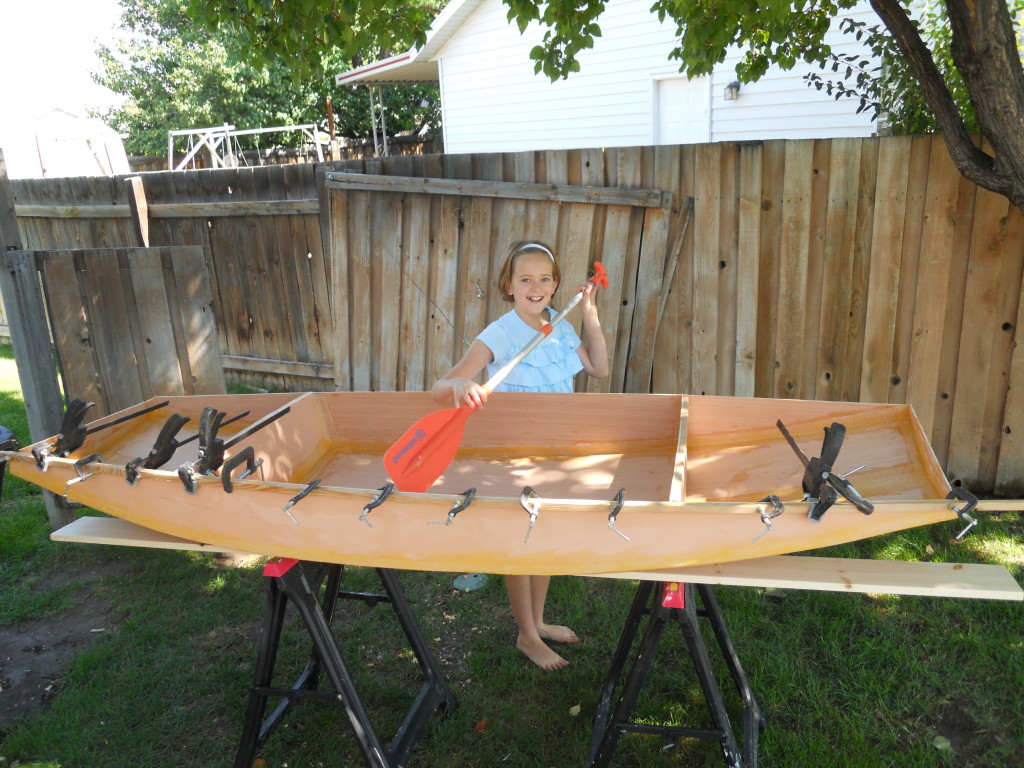
And on September 15, we tried the boat (unpainted and without decks) on Utah Lake. It worked spectacularly.
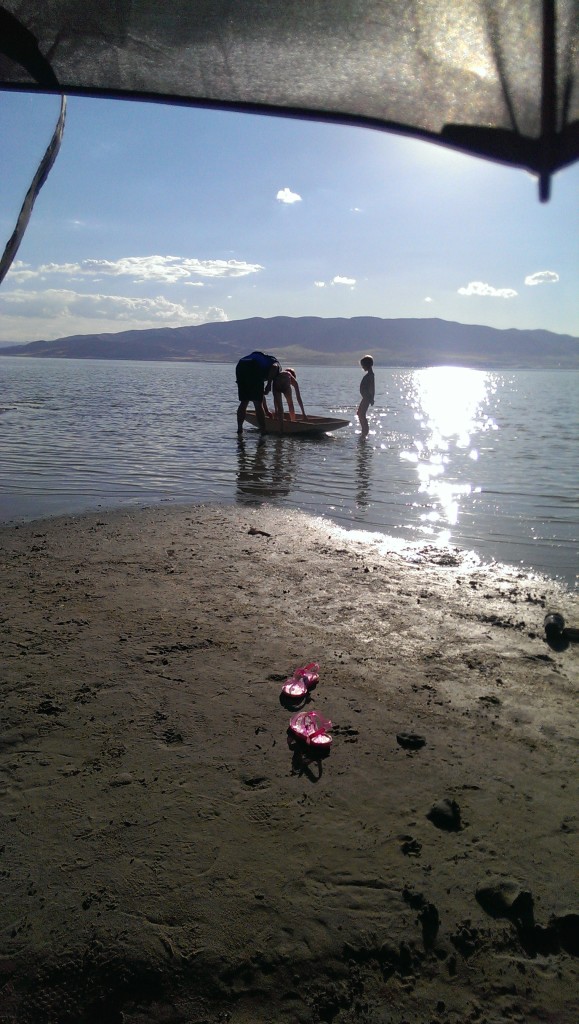
However, the test float did point out a few issues. First was that I really needed a double ended paddle and a skeg for the boat. I originally planned on building the mouse boat without a skeg, and the float test showed that the boat tracked well enough for me even with a single bladed paddle. However, for the girls it quickly became clear that a double bladed paddle and a skeg were going to be requirements.
So I put off mouse boat building for a while to think about how I wanted to do that, as I didn’t really like the non-epoxy solution in Mr. Atkin’s book. In fact, I didn’t think that a single ply of the plywood I was using was likely to work no matter what sort of adhesive I used. Plus, I needed a paddle anyway. I thought I would try my hand at building one of those.
So instead of mouse building I built a paddle, refit the gunter on my pdracer, and added a topping lift and seat to the pdracer. Add in a trip to Disneyland and a pair of major holidays and it wasn’t until January 6, that I got back to the mouse boat.
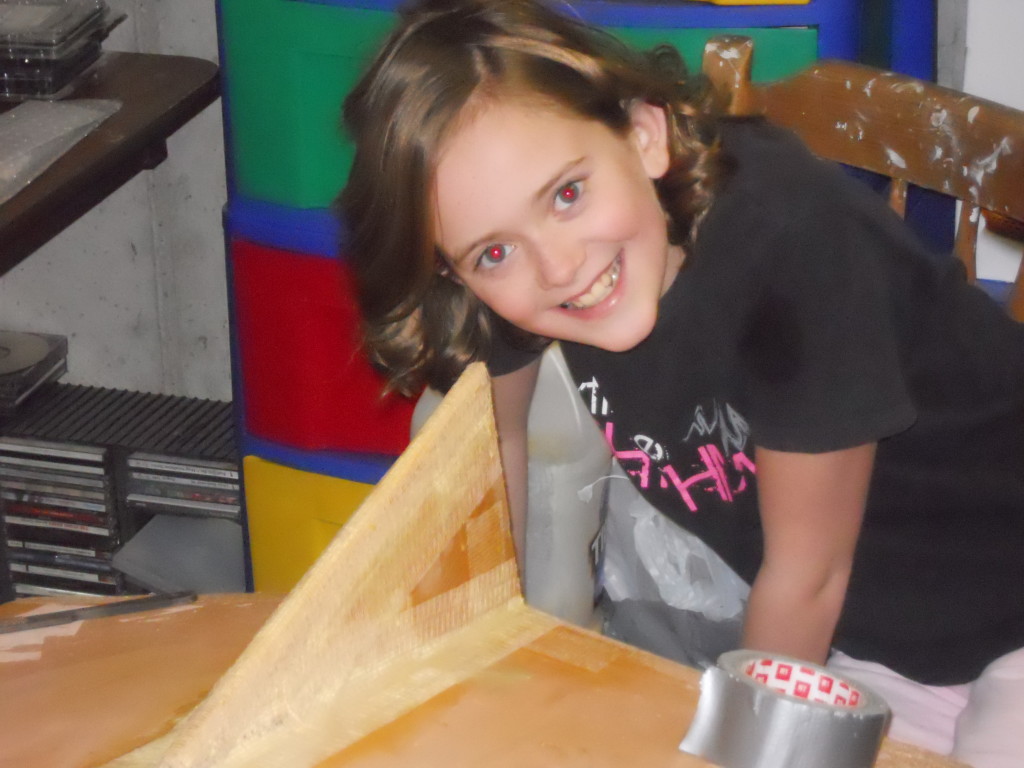
Even though I was back working on the mouse boat I still had lots of projects for the pdracer that I wanted to finish. I built oars, and a new cart for dragging the pdracer down to the lake.
Plus, I apparently didn’t take pictures of me working on the decks and painting the interior of the floatation chambers. So it wasn’t until February 13 that I finally glued on the decks.
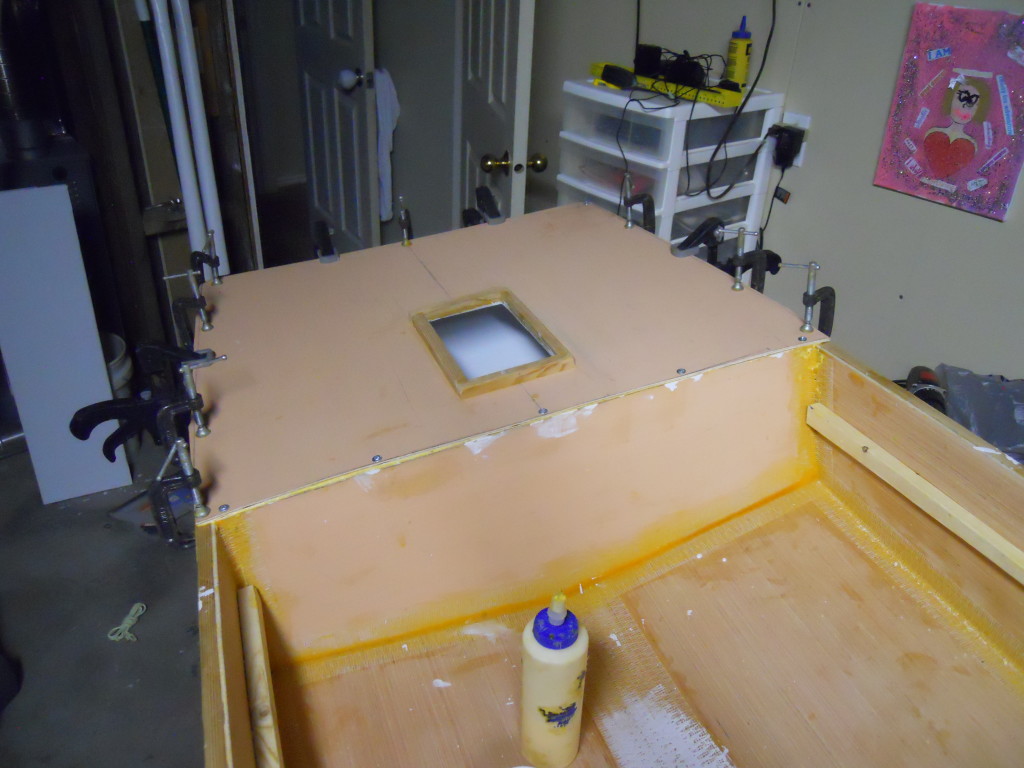
There are some major pieces that I am leaving out. Putting on the seat supports, for example. Covering the gunnels with drywall tape took most of a Saturday (I am not sure I am going to do that again). I did learn–near the end of course–That taping the drywall tape down with masking tape if it lifts once the glue is added works quite well. I might do a separate article on the seat, as that turned out well, and I have good pictures of it. If you are reading this and would like a detailed account of how I built the seat (or anything else really) please feel free to get a hold of me at jearl AT notengoamigos.org. Or just leave a comment.
If you liked this article you can read a detailed account of the final bit of painting.
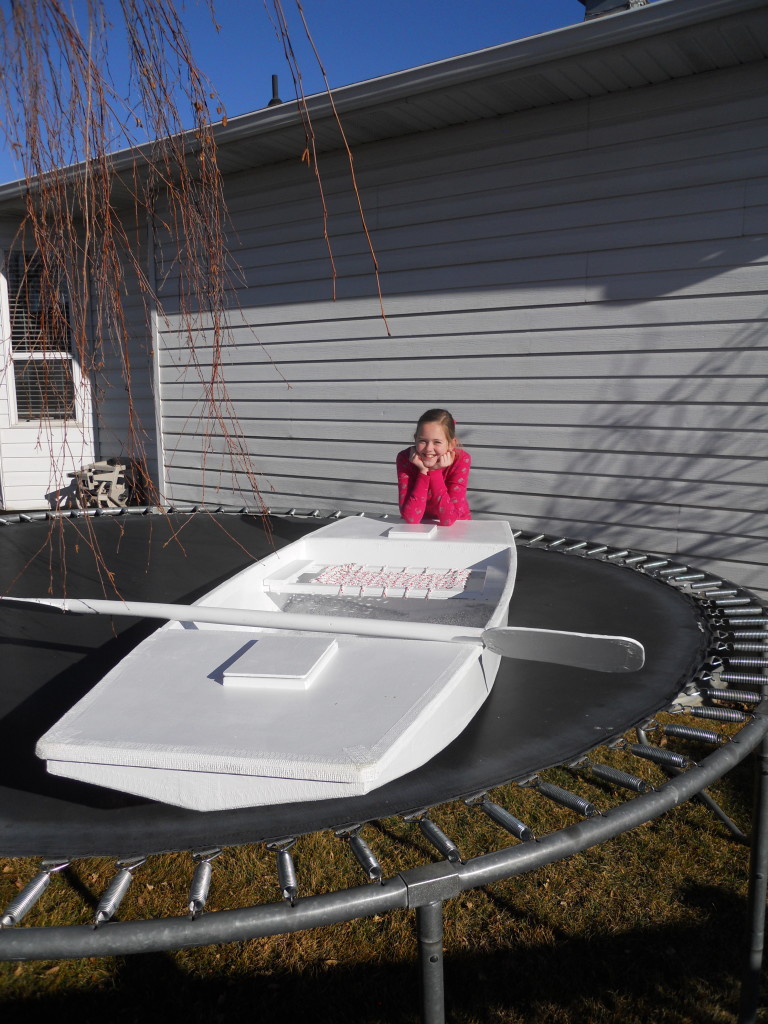
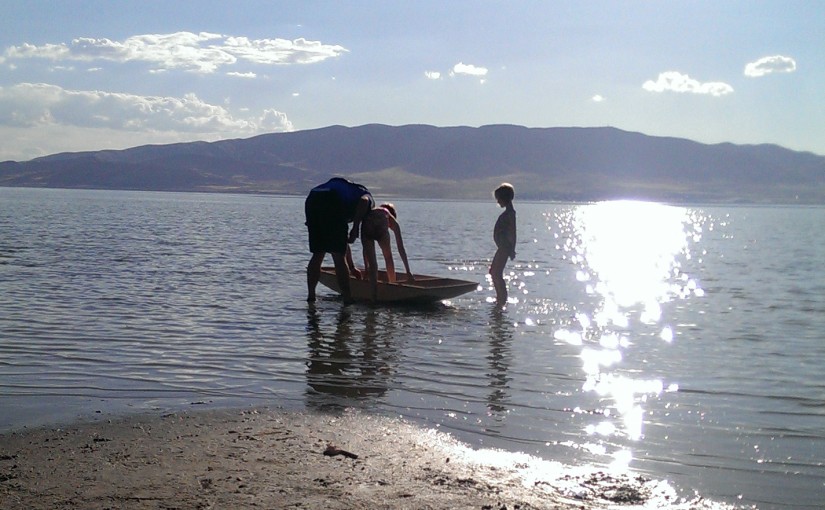
3 responses to “Mouse Boat One — Details”
i like this.
Seriously, I really really like this!
Thanks for the shout out! Seriously not necessary, but when you have the pictures to prove it… 🙂